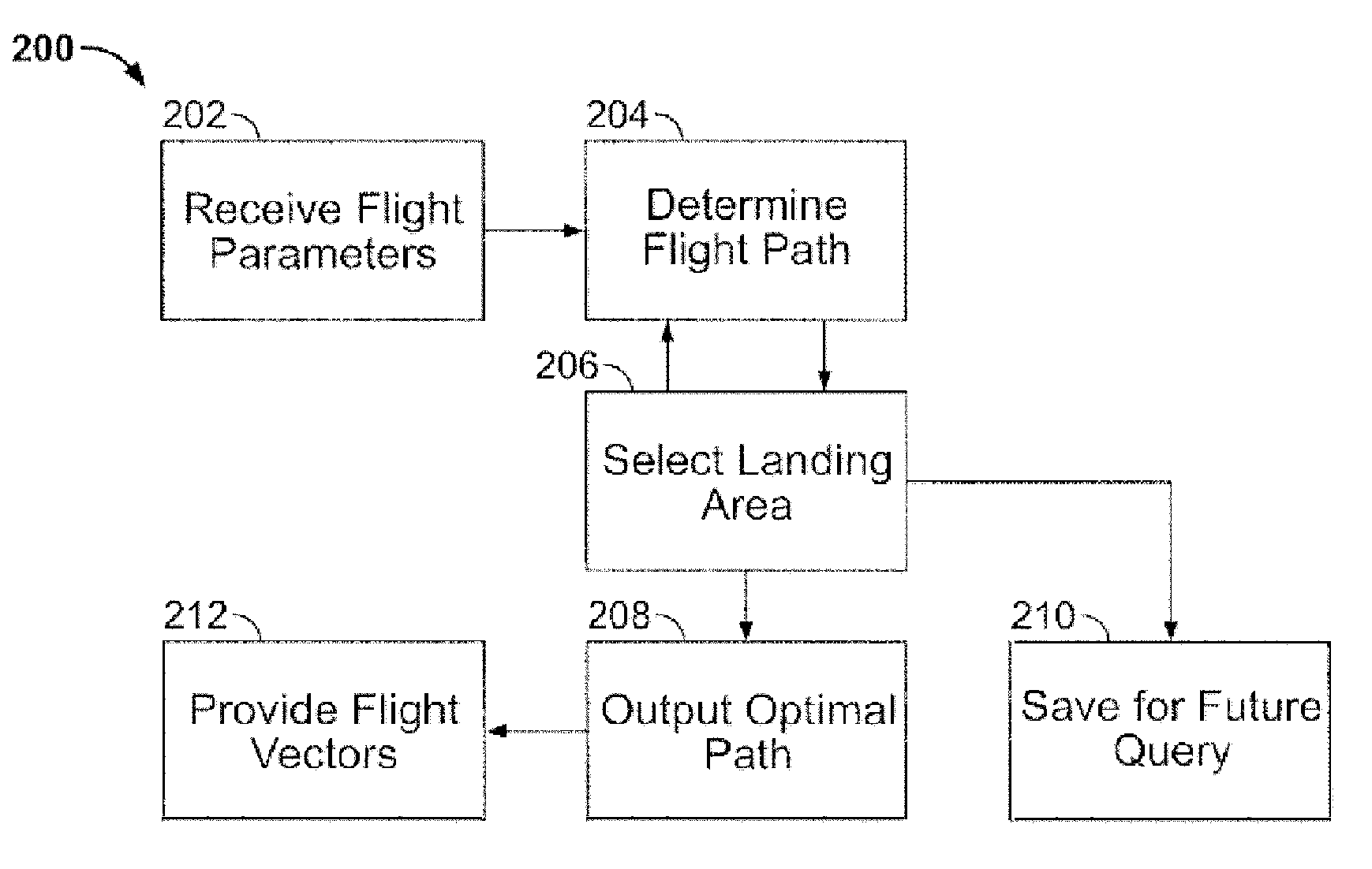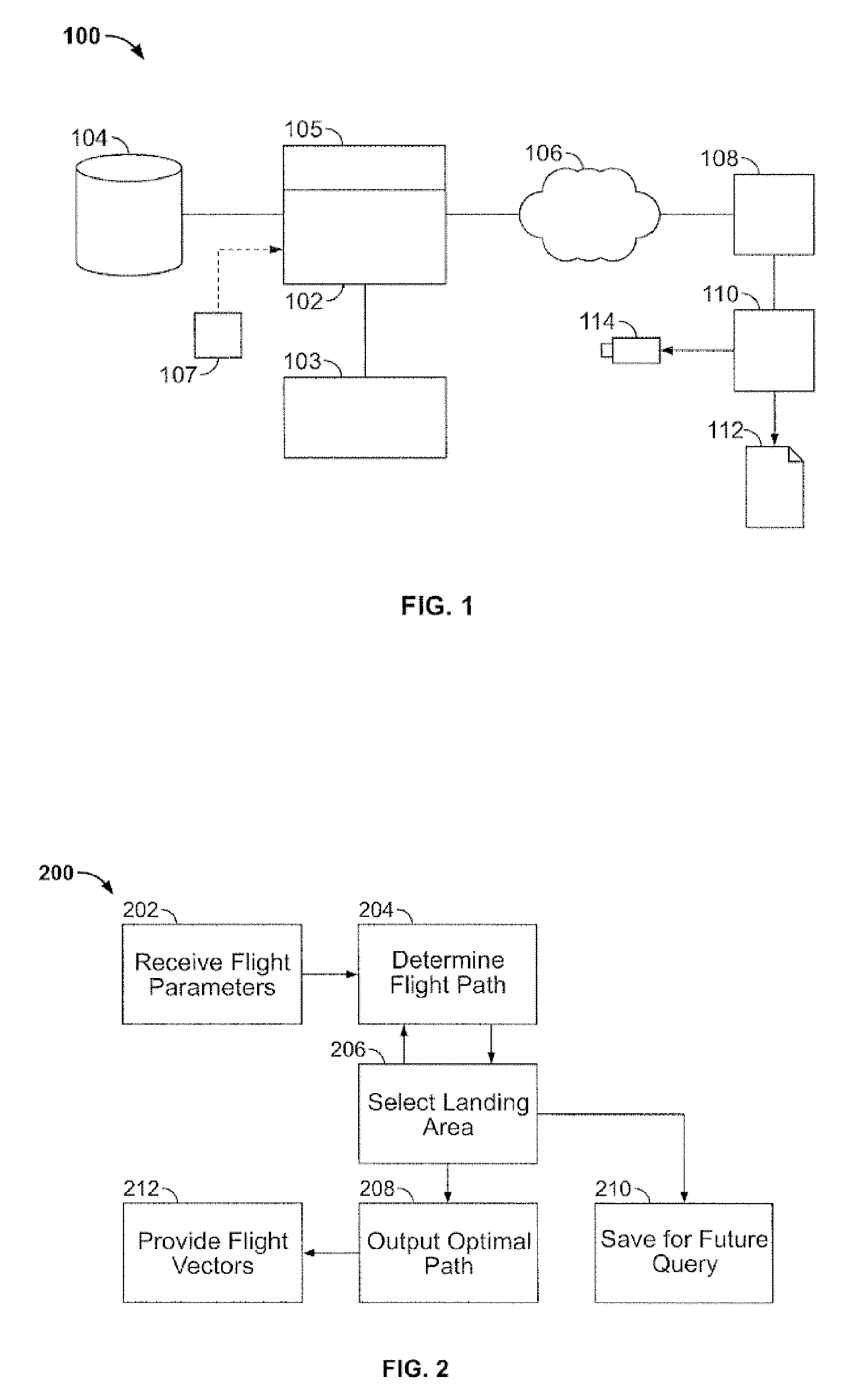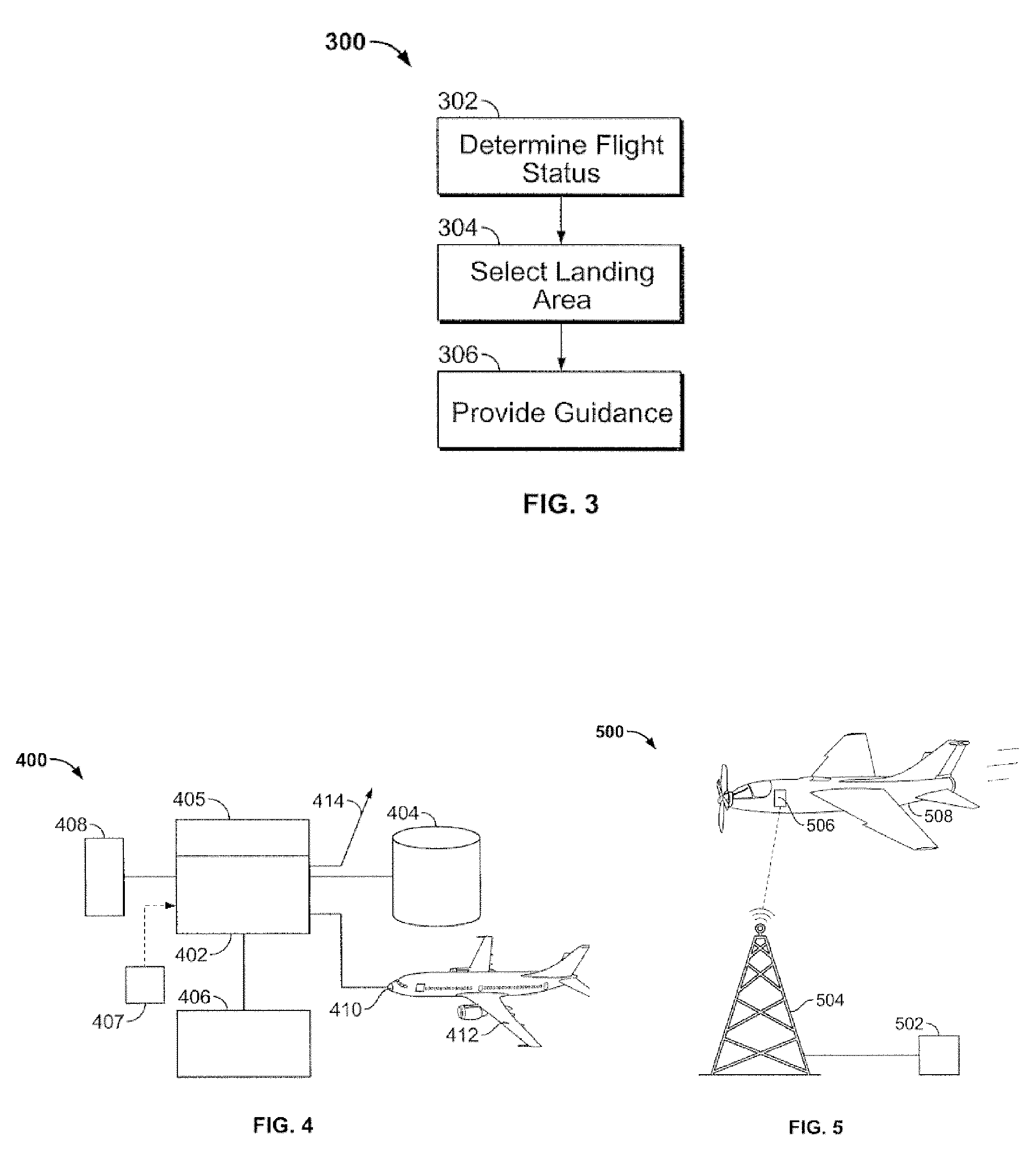Method and system for aviation navigation
a technology for aviation navigation and methods, applied in the field of computer-aided aircraft navigation methods and systems, can solve the problems of affecting aircraft of any size, fuel system malfunction, and small aircraft that are relatively prone to engine failure, and achieve the effect of reducing flight time or fuel consumption
- Summary
- Abstract
- Description
- Claims
- Application Information
AI Technical Summary
Benefits of technology
Problems solved by technology
Method used
Image
Examples
Embodiment Construction
In the detailed description that follows, like element numerals are used to indicate like elements appearing in one or more of the figures. FIG. 1 is a schematic diagram showing aspects of an aircraft navigation system 100 according to an embodiment of the invention. It should be appreciated that the invention may be implemented on any suitable computing platform.
In an embodiment of the invention, navigation system 100 comprises a computer 102 operatively associated with a database 104. Database 104 may contain data describing the location and characteristics of emergency landing area. Data concerning landing areas may be gathered in advance using various manual or semi-automatic data. Such data may include the geographic location of the landing area, elevation, length and orientation of landing strips, surface type (i.e., pavement, gravel, grass, water), use type (airstrip, abandoned airstrip, roadway, field, lake, etc.), and any other information useful for selecting or using a la...
PUM
 Login to View More
Login to View More Abstract
Description
Claims
Application Information
 Login to View More
Login to View More - R&D
- Intellectual Property
- Life Sciences
- Materials
- Tech Scout
- Unparalleled Data Quality
- Higher Quality Content
- 60% Fewer Hallucinations
Browse by: Latest US Patents, China's latest patents, Technical Efficacy Thesaurus, Application Domain, Technology Topic, Popular Technical Reports.
© 2025 PatSnap. All rights reserved.Legal|Privacy policy|Modern Slavery Act Transparency Statement|Sitemap|About US| Contact US: help@patsnap.com



